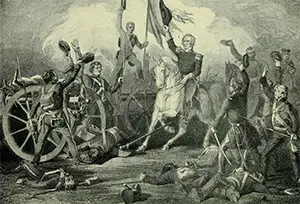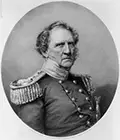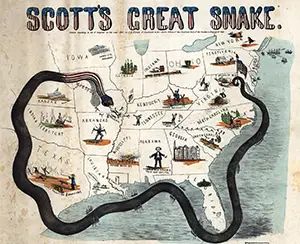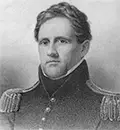Winfield Scott: Famous American General
Winfield Scott was a famous, successful commander in the U.S. Army during three wars in the 19th Century. He was born on June 13, 1786, at Laurel Hill, his family's farm in Dinwiddie County, Va. His father died when Winfield was young, and his mother died when he was 17. Scott studied law at the College of William and Mary in Williamsburg. He wanted a career in the armed service and earned a commission in 1808. The following year, he criticized a superior officer in public and found himself court-martialed and suspended for a year from active duty without pay. He returned He studied in Europe for a time and, back in America, married Maria Mayo, on March 11, 1817. The couple moved to Elizabeth, N.J., and eventually had seven children, five of whom survived into adulthood. Continuing with his military service, Scott wrote General Regulations for the Army in 1821. In the book, he called for an extensive revision of U.S. Army procedures; this earned him the nickname "Old Fuss and Feathers." Assigned to fight in the Black Hawk War, he arrived near the end of the fighting. His next assignment involved fighting of a different sort. South Carolina in the late 1820s had refused to impose tariffs that its officials thought were unfair. State officials proposed that they right to "nullify" the order to implement the federal tariffs. As part of the tensions that escalated into the Nullification Crisis, President Andrew Jackson dispatched federal troops under Scott to encourage South Carolina to adopt the tariffs. Scott used his diplomatic skills to help defuse the situation. Jackson dispatched Scott to the Southeast in the mid-1830s, to fight against the Seminoles. Scott later oversaw the transfer of a great many Cherokee from their homes to points west, in what was known as the Trail of Tears. He also headed off two potential conflicts with Great Britain, both along the border with Canada, in 1838. 
In 1841, Scott won the job of Commander General of the U.S. Army. When the Mexican-American War began in 1846, he and Zachary Taylor led the U.S. war effort. Scott drew up an invasion plan that resulted in the capture of a handful of key locations, including Mexico City, the capital. Scott led the successful siege of Veracruz and then marched his troop onward toward the capital, which he and his forces took on Aug. 14, 1847. Along the way, he cut the link to his supply lines and his men successfully lived off the land. Serving as one of his chief officers during this time was Robert E. Lee. Scott had made himself a candidate for the Whig Party nomination for President in 1844 but garnered little support. Four years later, a war hero, he tried again. Another war hero, Taylor, won the nomination and the presidency. Taylor died in office, and Vice-president Millard Fillmore became President. When it was time for Fillmore to run for re-election, he found his own Whig Party more enamored of Scott as the presidential nominee. Scott finally won his shot at the presidency, claiming the Whig Party nomination in 1852. Elected President that year was Franklin Pierce, who had served under Scott during the war with Mexico. 
Scott continued in his role as head of the military, working with then-Secretary of War Jefferson Davis to modernize the army. He used his diplomatic skills again in 1859 to help prevent a shooting war over territory that came to be known as the Pig War. He was still in charge of the U.S. Army when a handful of Southern states left the Union. Scott appointed Robert Anderson to command Fort Sumter. When Confederate forces fired on Fort Sumter on April 12, 1961, the Civil War began. 
Scott drew up a plan of attack known as the Anaconda Plan. Among its elements was a naval blockade of the Southern and Gulf coastlines, which President Abraham Lincoln endorsed, and a large attack along the Mississippi River, to split the Confederacy geographically, which Lincoln found wanting. The President, hoping for a quick victory, wanted to attack right away, not wait for the deployment of a massive attack force. Scott signed off on Irvin McDowell's battle plan for the First Battle of Bull Run, but the result was a disaster for the Union. In the wake of that defeat and amid criticism from the brash young George McClellan, Scott resigned as commander on Nov. 1, 1861. His last diplomatic effort was in preventing war with Great Britain again, this time after a Union officer had captured two Confederate officials Scott died at West Point on May 29, 1866, after watching from afar as Union armies eventually split the Confederacy in two by seizing control of the Mississippi River. He was the longest-serving general in the History of the U.S. Army and also served the longest as the top commander. He was one of a small number of U.S. Army generals to appear on a U.S. postage stamp. Named for him are many cities, town, and counties. A statue of him is in a circle named for him in Washington, D.C. |
|
Social Studies for Kids
copyright 2002–2024
David White



 to duty and won a promotion to lieutenant colonel in time for the beginning of the
to duty and won a promotion to lieutenant colonel in time for the beginning of the  onboard a British ship. His last act of military business was to recommend to Lincoln that he appoint
onboard a British ship. His last act of military business was to recommend to Lincoln that he appoint 
